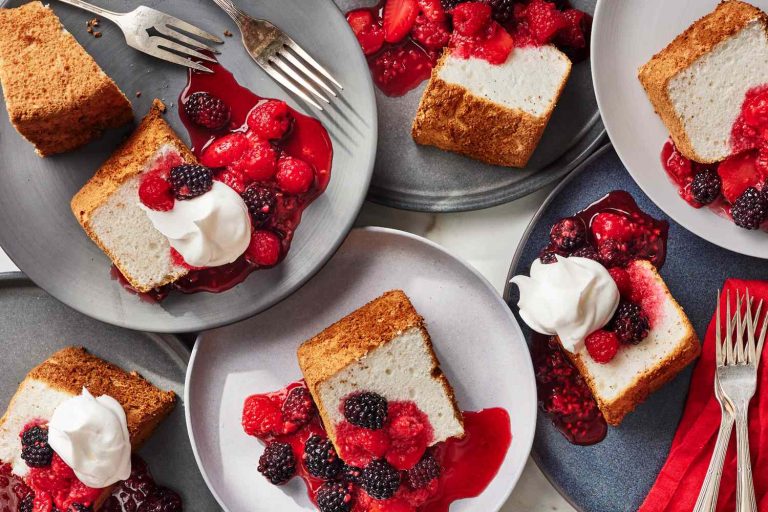Polish Cream Cheese Coffee Cake Recipe: Sernik with Flavorful Variations
Polish Cream Cheese Coffee Cake, known as “Sernik” in Polish, has its origins deeply rooted in Polish cuisine. Traditionally prepared using farmers’ cheese, this cake became a staple in many Polish households. It frequently appears during important occasions like Easter and Christmas. Its origins date back to the early 19th century, with recipes passed down through generations. The tangy-rich flavor of the cream cheese filling paired with a crumbly base makes it a beloved dessert among Poles. The cake’s preparation often involves community gatherings, highlighting its cultural importance.
Evolution Over the Years
The evolution of Polish Cream Cheese Coffee Cake has seen numerous variations in ingredients and techniques. Initially, it relied heavily on local farm products. Over time, adaptations included cream cheese instead of traditional farmers’ cheese for convenience and texture. Modern renditions might incorporate flavors like vanilla, lemon zest, and even chocolate, adding diversity to the classic recipe. Despite these changes, the essence of the cake remains unchanged. It’s still cherished for retaining the nostalgic, homely feel while adapting to contemporary tastes. This evolution illustrates the cake’s ability to retain cultural roots while embracing change.
Key Ingredients and Substitutions
Essential Components
Polish Cream Cheese Coffee Cake involves key ingredients that define its unique taste and texture. Understanding these components helps in mastering the recipe.
- Farmers’ Cheese: Traditional recipes use farmers’ cheese, providing a crumbly yet creamy texture. Substitute with ricotta or cream cheese for a similar consistency.
- Flour: All-purpose flour forms the base of the cake. Using a gluten-free blend works for those with gluten intolerance.
- Sugar: Granulated sugar sweetens the cake. Substitute with coconut sugar or stevia for a healthier option.
- Butter: Unsalted butter ensures the richness of the cake. Use margarine or a plant-based alternative for a dairy-free option.
- Vanilla Extract: Adds depth of flavor. Real vanilla extract is preferable, but vanilla paste can also be used.
- Eggs: Provide structure and moisture. Use flaxseeds or chia seeds mixed with water as an egg replacement for a vegan version.
- Sour Cream: Contributes to the moisture and tang. Yogurt serves as a viable alternative.
Dietary Adjustment Options
Making dietary adjustments ensures everyone can enjoy Polish Cream Cheese Coffee Cake.
- Gluten-Free: Use a 1:1 gluten-free baking flour to replace all-purpose flour.
- Dairy-Free: Substitute farmers’ cheese with dairy-free cream cheese and butter with plant-based margarine.
- Low-Sugar: Replace granulated sugar with coconut sugar, stevia, or erythritol.
- Vegan: Use flaxseeds or chia seeds (1 tablespoon mixed with 3 tablespoons water per egg) instead of eggs and substitute dairy products as mentioned above.
These adjustments maintain the cake’s fundamental flavor while catering to specific dietary needs.
Step-by-Step Baking Guide
Preparing the Dough
Mix flour, sugar, and salt in a large bowl. Optionally, add lemon zest for extra flavor. Cut in cold butter using a pastry cutter or two knives until the mixture resembles coarse crumbs. Add egg yolk and sour cream, then mix until the dough starts to come together. Knead the dough lightly on a floured surface until smooth. Wrap it in plastic wrap and refrigerate for 30 minutes.
Making the Filling
Beat softened cream cheese in a separate bowl until smooth. Add sugar, eggs, vanilla extract, and a pinch of salt to the cream cheese. Mix until well combined and creamy. If you prefer a tangier taste, add a bit of sour cream or lemon juice. Ensure the filling is lump-free for a smooth texture.
Assembly and Baking
Preheat the oven to 350°F (175°C). Roll out the chilled dough on a floured surface to fit your baking pan. Transfer the rolled dough to the pan, pressing it evenly into the bottom and slightly up the sides. Pour the cream cheese filling over the dough, spreading it evenly. Optionally, sprinkle the top with cinnamon or a crumb mixture.
Bake for 45–50 minutes or until the top is golden and the filling is set. Allow the cake to cool completely in the pan on a wire rack before slicing. For best results, refrigerate the cake for a few hours or overnight to let the flavors meld.
Serving and Storage Tips
Best Ways to Serve
Serve the Polish Cream Cheese Coffee Cake chilled or at room temperature. Slice the cake into even squares or rectangles for a neat presentation. Garnish with fresh berries, whipped cream, or a sprinkle of powdered sugar for added visual appeal. Pair the cake with a cup of hot coffee or tea to complement its creamy texture and rich flavors.
Storing for Freshness
Store any leftover cake in an airtight container. Refrigerate to maintain freshness and preserve the creamy filling. For best results, consume within 3-4 days. If you want to keep the cake longer, freeze individual slices. Wrap each slice tightly in plastic wrap and place in a freezer-safe bag. Thaw in the refrigerator before serving, ensuring the cake retains its texture and taste.
Conclusion
Polish Cream Cheese Coffee Cake, or Sernik, offers a delightful blend of tradition and flavor. Whether you’re sticking to the classic recipe or trying out a modern variation, this cake’s rich, creamy texture is sure to impress. Don’t forget to chill it before serving and consider adding a touch of elegance with berries or whipped cream. Pair it with your favorite coffee or tea for a truly indulgent experience. Store any leftovers properly to enjoy this delicious treat for days to come. Dive into the world of Sernik and bring a piece of Polish culinary heritage to your table.






